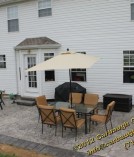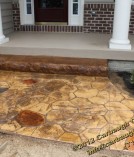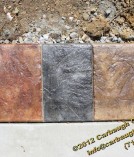While concrete is an extremely durable surface that requires minimal care, there are ways to ensure the longevity of your new concrete work.
Winter weather is hard on concrete, from the freeze-thaw cycles experienced in our area to ice-melt products. There are simple ways to avoid damaging your new concrete, many of which are inexpensive and easy to do.
Avoiding the use of salt and other ice-melt products is the best thing you can do to avoid damage to your concrete, especially during the first year, but in subsequent years as well. Salt and ice-melt products are very harmful to concrete and will inevitably cause spalling, flaking, or scaling of the concrete. While avoidance of ice-melt is ideal, it is not necessarily realistic. Whenever possible, consider using anti-skid materials rather than ice-melts. Sand and kitty litter are inexpensive, provide some slip-resistance, and are readily available, all while not destroying your concrete.
Since avoidance of salt and ice-melt is an unrealistic expectation for many people, there are best practices to use to help maintain your concrete’s durability. Using an ice-melt that is intended for use on concrete is better than using more harsh chemicals, though may still damage your concrete. Use sparingly, and clean surface as soon as is practical.
An additional option for those that use ice-melt is an anti-spalling sealing compound. These sealers penetrate the concrete to help prevent the chemicals from salt and ice-melt products from penetrating and damaging the concrete. For those regularly treating their concrete with ice-melt products, an anti-spalling sealer is highly recommended.




